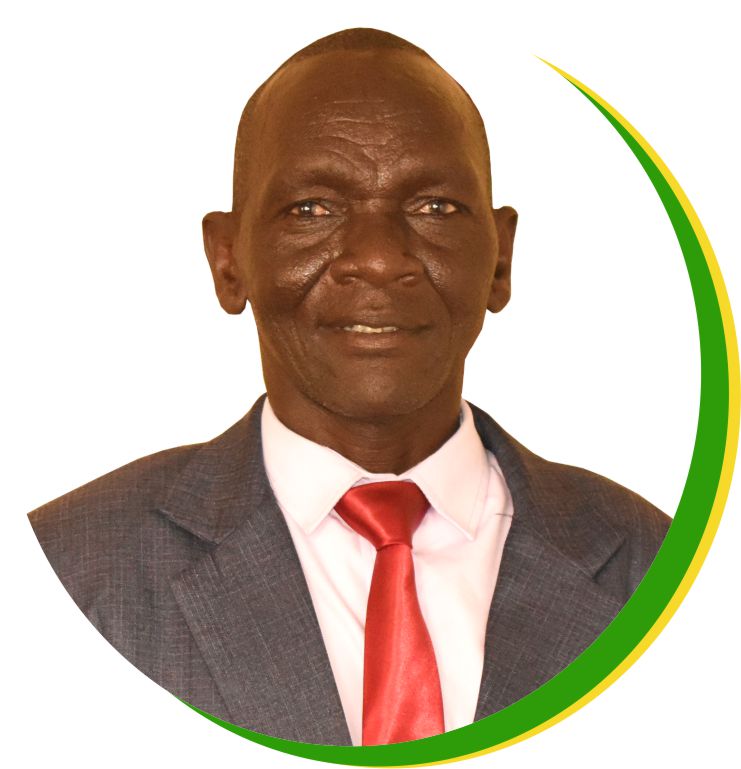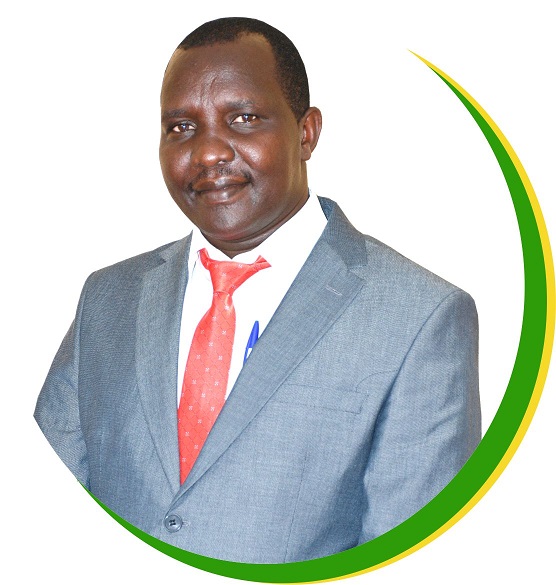Water, Environment, Natural Resources and Climate Change
The department of Water, Environment and Natural Resources is mandated with the management of water resources; provision of water services; reclamation of degraded land and ASALs into vibrant economic development areas; protection and exploitation of natural resources; conservation practices, protection and management of county forests and game reserves; promotion of farm and dry land forestry development; promotion of clean and secure environment by controlling air pollution, outdoor advertisement and other public nuisance. The departments consist of two main departments; department of Water and department of Environment and Natural Resources. The department of Environment and Natural is further divided into department of Environment, land reclamation, forestry, Natural Resource, Mines and Geology and Wildlife.

|
County Executive Committee Member |

LEONARD KAMSAIT
Chief Officer
A clean, healthy, safe and sustainably managed water, environment and natural resources.
To promote good governance in the protection, conservation and development of environment, water and natural resources for equitable and sustainable development in West Pokot County.
Teamwork and focus on results, sustainability, honesty and integrity, equity and innovation.
Department's Key Units
|
PROGRAMME |
OBJECTIVE |
| Water services | To increase access and availability of adequate water resources |
|
Forestry |
To improve forests extension services, increase tree cover, protect, conserve, and sustainably manage county forests for livelihood improvement |
|
Land reclamation |
To reclaim degraded lands and ASALs into vibrant economic development areas |
|
Environment |
To sustainably manage and conserve forests and wildlife resources. |
|
Natural Resources Management |
To educate community to sustainably use natural resources |
|
Mines and Geology |
To enlighten the community on mining laws map county mineral potential and sustainably use them. |
| County Climate Change |
Department Key Achievements
With water being a scarce resource in most parts of the county, the department has strived to ensure that as many residents as possible get access to clean water. Over the period of four years, the department has been able to-:
- I. Drill 79 boreholes across the county, especially in North Pokot.
- II. Upgrade 30 boreholes to solar powered ones.
- III. Rehabilitated 180 boreholes.
- IV. Constructed five water pans.
- V. Constructed 34 sand/ sub-surface dams.
- VI. Rehabilitated 9 water supply systems.
- VII. Protected 15 water springs.
- I. 1,603,000 seedlings plated in Kamatira Forest, Kapkoris hills and various schools across to county to achieve 10% tree cover.
- II. 41 hectares of school land planted.
- III. More than 25 women, youth, green schools’ groups established.
- IV. Three laws and policies developed on forest conservation.
- V. 3,000 hectares of water catchments, riverbanks, swamps, and fragile lands protected.
- I. More than 10 acres of dryland forest farms established.
- II. 50,000 energy saving jikos donated to households.
- III. 20 community trainings conducted on climate change.
- IV. Two climate change mitigation policies established, such as Climate Change Act.
Department’s Flagship Projects
- 1. Kapenguria Sewerage system- The project is to be located in Kapenguria and its environs with the aim of ensuring proper liquid waste management. Currently underway, the project is expected to benefit 10,000 households.
2. Muruny-Siyoi Extension Water Project- The project is expected to benefit 7,000 households in Chepareria, Kacheliba, Cheptuya and Serewo. The project is underway.
3. Muruny-Chepareria Water Project- Benefit 3,000 households in Kipkomo, especially Chepareria township.
4. Kacheliba Water Supply- Benefit 1,250 households in Kacheliba. The project is on-going.
5. County Tree Planting /Reforestation and Afforestation- To increase tree cover from 3.9% to 7% by 2022 and 15% by 2030. More than 50,000 Hectares of land planted with trees and distributed 120,000 Tree seedlings to farmers which is equivalent to 75.879 Hectares of private farms.
- 6. Conservation and Management of Cherangany Hills Water Tower- To protect this water source, more than 10,000 hectares of land has been reforested.
Water
Environment and natural resources
Climate change adaptation/ Action.
Climate change is a global issue affecting many countries across the globe. It is disrupting national economies and affecting lives. Weather patterns are changing, sea levels are rising, and weather events are becoming more extreme.
In 2019, the effects of climate change were on a record high, recording the second warmest year on record and the end of the warmest decade (2010- 2019) ever recorded. Carbon dioxide (CO2) levels and other greenhouse gases in the atmosphere rose to new records in 2019. People are experiencing the significant impacts of climate change, which include changing weather patterns, rising sea level, and more extreme weather events.
In 2019, West Pokot County bore the brunt of climate change, resulting in loss of life and property in areas like Tamkal, Nyarkulian and Tapach.
West Pokot County Action
Affordable, scalable solutions are now available to enable countries to leapfrog to cleaner, more resilient economies. The pace of change is quickening as more people are turning to renewable energy and a range of other measures that will reduce emissions and increase adaptation efforts.
The Department of Water and Natural resources has spearheaded efforts geared towards tackling the adverse effects of climate change.
1. Nature Based Solutions
Forestry - increase tree cover from 3.9% 10% by 2022. This has been and continues to be achieved through various initiatives by the department and partners.
Greening of schools by plantings trees resulting in 5 ha of land plated so far by the county.
Restoration of county forests such as Kamatira, Karas and Kapkoris forested. More than 15,000 seedlings have been planted.
Planting of trees and distribution of seedlings to farmers, women and youth groups. Communities have also been trained on climate change adaptation.
Protection of water-catchments areas.
2. Building resilience
Water- to cushion the residents against adverse weather changes such as drought, various programs are in place to ensure drought-resilience and support livelihoods.
Drilling of solar-powered boreholes
Water pans and sub-surface dams constructed, with some desilted.
Agriculture- Supported farmers through farm input incentives aimed at cushioning farmers through drought season.
Distribution of free certified maize seeds across the county
850 ha of farms in Weiwei irrigation scheme ploughed by the county
Promotion of cash crop development through distribution of coffee, pyrethrum, Tea, Sisal, cotton seeds/ seedlings and aloe vera.
Vaccination of cattle, sheep and goats against Zoonotic diseases (PPR, LSD, Black quarter, Antrax)
Distribution of improves livestock breeds such as Sahiwal bulls, galla goats and boran breeds stocked in Nasukuta livestock breeding center.
Establishment Boma rode Nasukuta Livestock Breeding farm.
Stocking Turkwel dam with mixed sex tilapia fingerlings.
Establishment of Green parks
Health and sanitation
- Use of incinerator for waste management in high volume health facilities
- Adoption of solar powered vaccine fridges for use in rural and hard to reach health facilities
- Certifying villages as Open Defecation Free with Tapach and Siyoi wards celebrated as Open Defecation Free ward
Communities have been taught how to build and make use of Energy saving cook stoves. Many households have embraced the cook stoves.
Promoting smart clean Climate change adaptation policies: - Development County Forest Conservation and Management Bill (Draft), Development County Charcoal rules and regulations, Development County Clime Change Policy, Development County Clime Change Finance Policy, Legislation of County Climate Change Fund Act.
Minerals
-
a. Gold
Gold is found along most rivers that flow towards the north in the county. These are Muruny, Iyon and Turkwell. It is generally panned by the locals, who market it through their local cooperative societies, with some selling to businessmen/women. Although much exploration has been done, its source is yet to be discovered.
b.Iron Orec. Copper
Copper traces have been found around Turkwell. Seven applications have an interest for copper with two of them having been granted as Special Prospecting Licenses (SPL).
d. Chromite
Chromite is found in Telot area in Sekeer. The deposit is a mineralized plug within Telot hill. The mineral has been removed from the surface and further exploration may be required to determine if there is more chromite deeper in the hill.
e. LimestoneLimestone is the most abundant mineral in the county. It extends from Sebit area in the south east to Alale to the north west. Limestone was previously licensed by Local governments/ County Government prior the onset of the Mining Act 2016. The limestone in the County was exclusively licensed to Cemtec by the County Council of West Pokot for a lease period of 99years. Some of it had been mined and used at Tororo Cement in Uganda.
.